
Know the types of rail
Nowadays, trains are one of the most important means of transport for supplying and displacing the population. Since the first construction of railroad networks in Brazil, such as the technologies applied to improve the structure of the displacement platforms and the unique trains to be moved, but this does not prevent that a numerical number of miles of the railroad network is totally abandoned. The National Land Transport Agency (ANTT), responsible for all the dissemination of data on transport in the country, points to a more recent survey that about 8,600 km of the more than 28,000 are untreated. Even so, we still have about 20,000 km of railroad network available for use.
Trains are extensive vehicles, which already have a large number of wagons, essential for transportation as cargo that will be transported. The cars are like compartments and are attached to others, forming a line. As wagon assembly structures and a number of loaded loads, as time passes, undergo changes to achieve, mainly, a damage resistance for the types of tracks that were being built.
For the implementation of the railroad line, it is necessary to be aware of several factors, such as the type of terrain, such as constructions present around, materials that are used and, mainly, or compliance with the regulations that regulate or the weight of the wagons and trains that pass by rail.
Therefore, the displacement of the trains is done by moving the wheels and complementary tools on the tracks. But do you know exactly how this movement works and what are the types of trails present in the Brazilian railroad networks?Well, continue reading the article and learn more about how the rails can be mounted and how they behave.
Content Index
Specifications for the rail types

The rails are built according to some properties and require specific materials for their composition. Over time, they have been assembled with various elements and have undergone a long adaptation to increasingly meet the needs of trains. Currently, the rails are made up mainly of metallic elements, such as steel.
The most common rail profile on Brazilian railways is the vignole rail and its structure is composed of three fundamental points. The base, which is attached to the ground, is the main form of support for the apparatus and is known as the skate. At the height of the rail, where the train wheels pass effectively, there is the billet or head. The central part, in turn, which connects the base with the upper part, like a trunk of the rail, is called the soul.
Currently, rail types are classified mainly according to the length and weight of the built unit. The nomenclature is made as follows: the acronym TR is followed by the value of the weight per meter constructed, in kilograms. That is, a unit that has a meter weighing 50 kg, consists of the acronym TR 50, and so on. Check below the most common types of tracks on Brazilian road networks.
Know the types of rail
TR 32 and TR 37 rail
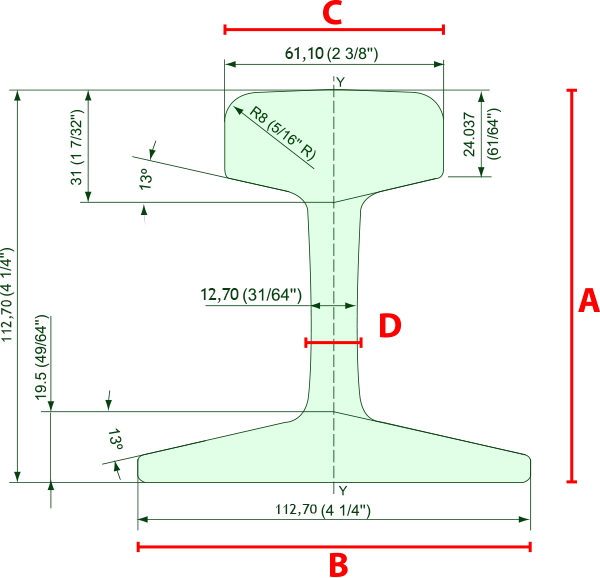
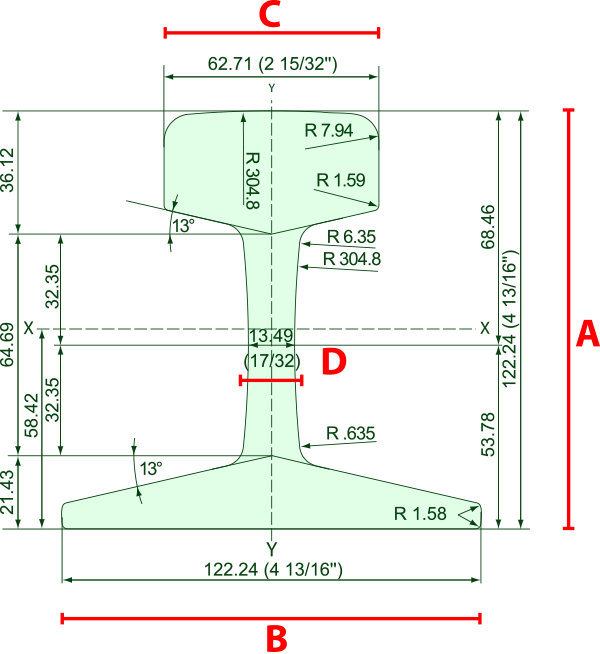
To start, we will talk about the tracks most found in Brazil in order of weighing, starting from the lightest and ending with the approach on the heaviest. This numbering of the TR 32 and TR 37 rails means that the meter of a rail in the composition weighs around 32 kg and 37 kg, respectively.
The weight of a rail bar is totally linked to the type of train that will move through that specific railroad. That is, the lower the weight of the types of rails, the lower the weight allowed for the wagons and the loads transported will be.
This type of track is usually ideal for locomotives, which weigh the axles of the wagons equivalent to 16 and 18 tons, respectively. They are also very common in other spaces such as industrial environments, overhead cranes and transport of ores extracted from mining companies.
This specification of the weight of the axles of the wagons is specifically formulated for the type of line, and the construction of the rail for the space is a consequence of the established regulations, since the heavier the rail, the more expensive its production. Therefore, it is necessary to establish limits for the weight. If the line allows the axles of the wagons to weigh 16 kg, there is no need to build rails with larger weighings and, of course, more expensive ones.
TR 45 rail
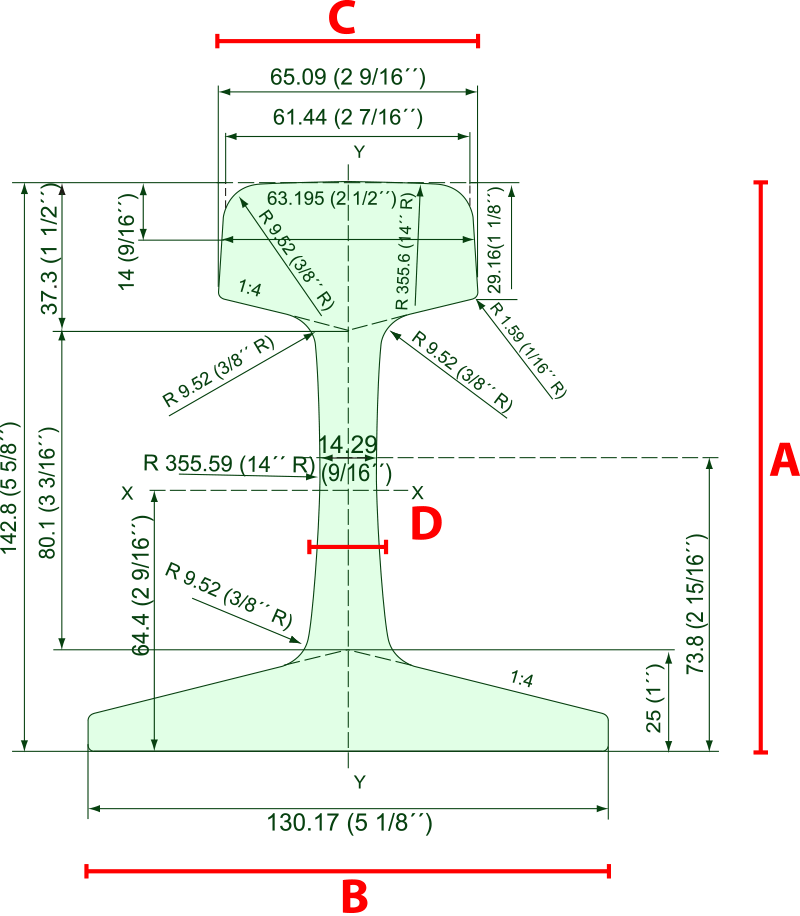
As we can see, as the floor of the rail material increases, the weight of the train wagons on the line also increases. Therefore, this type of track mentioned in this paragraph supports higher weighings in the wagons than those mentioned in the previous topic.
TR 45 rails are widely used on Brazilian railways and support up to 20 tons per axle. They are versatile, built in spaces for transporting cargo without specifications, so they are very present in the country's rail network.
Rail TR 57 and TR 68
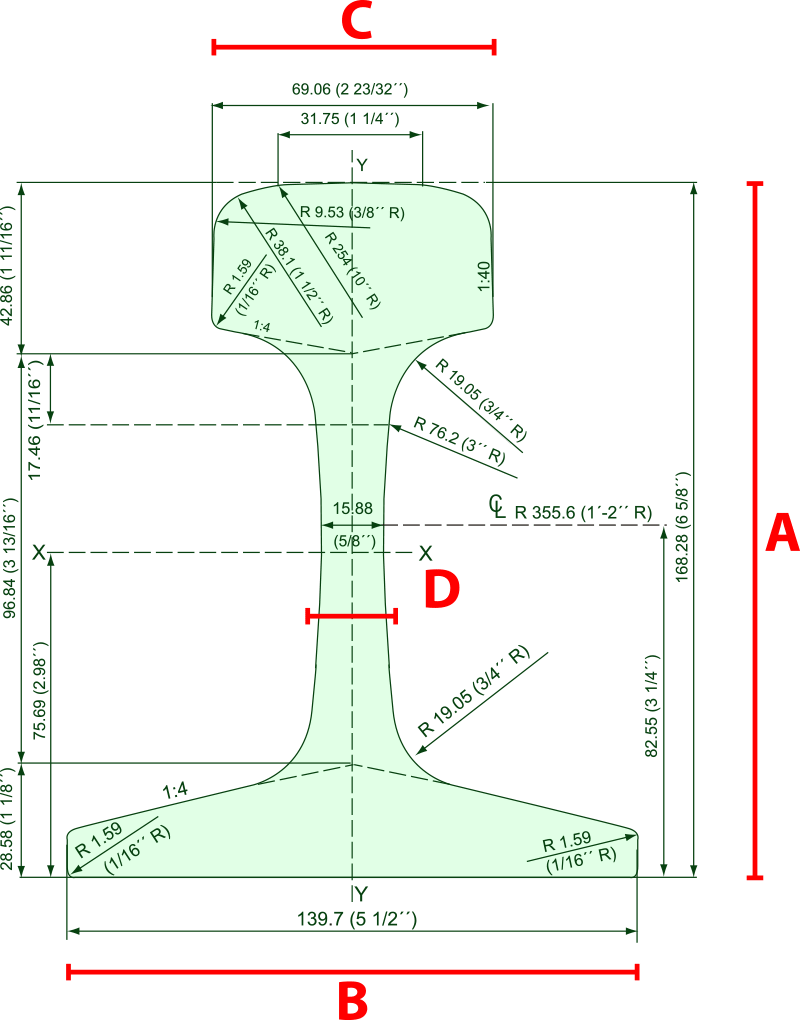

The following types of tracks are the most abundant on the railroads in Brazil. When it comes to meeting the need for loading large loads, these rails are the most recommended for construction.
These rails support greater weighting of the axles of wagons and can receive 25 and 30 tonnes per axle, respectively. The transportation of materials and heavy loads is carried out by these two types of tracks, mainly in the sectors of mining and working with grains, essential items for the Brazilian economy.
Basically, these are the main types of tracks that we currently find on our railroad line. Although many railroad lines are abandoned, as mentioned at the beginning of the text, it is possible to observe a greater use of meshes for the transportation of cargo, largely due to the need to share the work with the highway lines, expanding the country's transportation options.
Weighing the rails
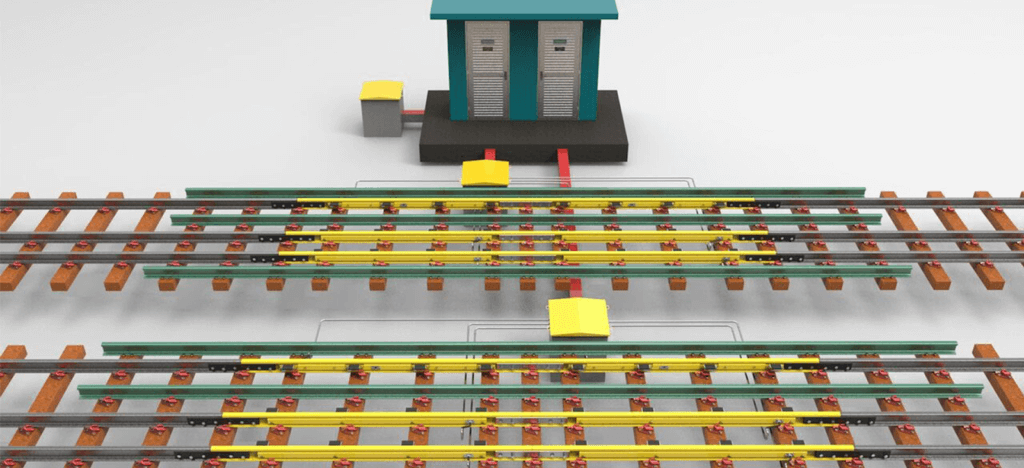
Weighing systems can use rails, with the same track profile, as the sensor element. Called instrumented tracks, these receive strain gauges that are attached to the rail's core, these sensors measure the deformation that occurs with the passage of a wheel, these values, in turn, are passed through a mathematical calibration equation or multiplied by gain values, that will transform the strain value into weight values. This is a very widespread and usual weighing technique in motion since the 1980s. With the advent of faster and more robust electronic and computational systems, several weighing cells could be added, which improve the accuracy and increase train speed during weighing.
Weighing in motion using instrumented rails has some advantages. As the weighing occurs with the passage of the wagon axles, this weighing can be expanded, for weight of the wheel, weight of the axle, of the bogies and sides of the wagon, the weight of the total wagon and the total weight of the train composition, generating important information for loading or unloading wagons, for rail safety, for accident prevention, among other functions.
Safety for the rails
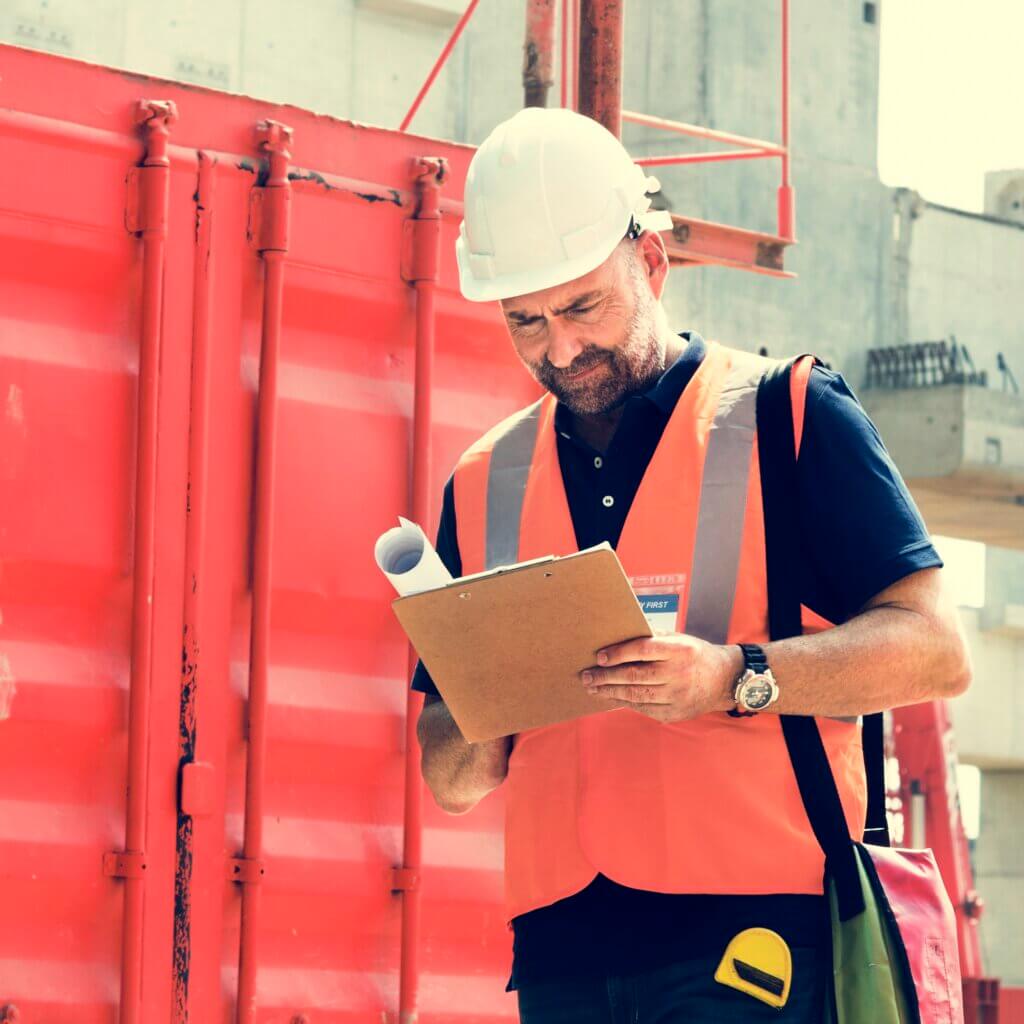
Regardless of the type of track that will be built, it is very important that its structures are assembled with the highest degree of protection possible, both for the line and for the trains. Otherwise, there are a number of problems that would be very damaging to the companies that build the lines, such as:
- Life risk to workers;
- Loss of cargo;
- Higher space maintenance cost;
- Derailment;
- Unnecessary wear on the structures;
- Financial waste.
Conclusion dos tipos de trilhos
As we have seen throughout the text, it is essential that the railroad lines build the tracks according to established weighing standards, both for the tracks themselves and for the trains that will move on them. The main learning that we can learn from the article is that by respecting the rules and carrying out the construction of the tracks in an appropriate way, with more resistant materials and according to its purpose, it is possible to extend the durability of the iron composition and avoid wear in the structuring of the tracks. rails, reflecting in a better experience with this type of transport.
Leia mais conteúdos sobre o setor ferroviário no our Blog
Complementary sources of supporting texts:
https://www.trilhos.com.br/trilho-padrao-tr.html
https://www.ufjf.br/ep/files/2009/08/tcc_jul2009_fernandamacedo.pdf
https://www.tecmundo.com.br/trem/78418-trilhos-trem-construidos-dia-surpreenda.htm




